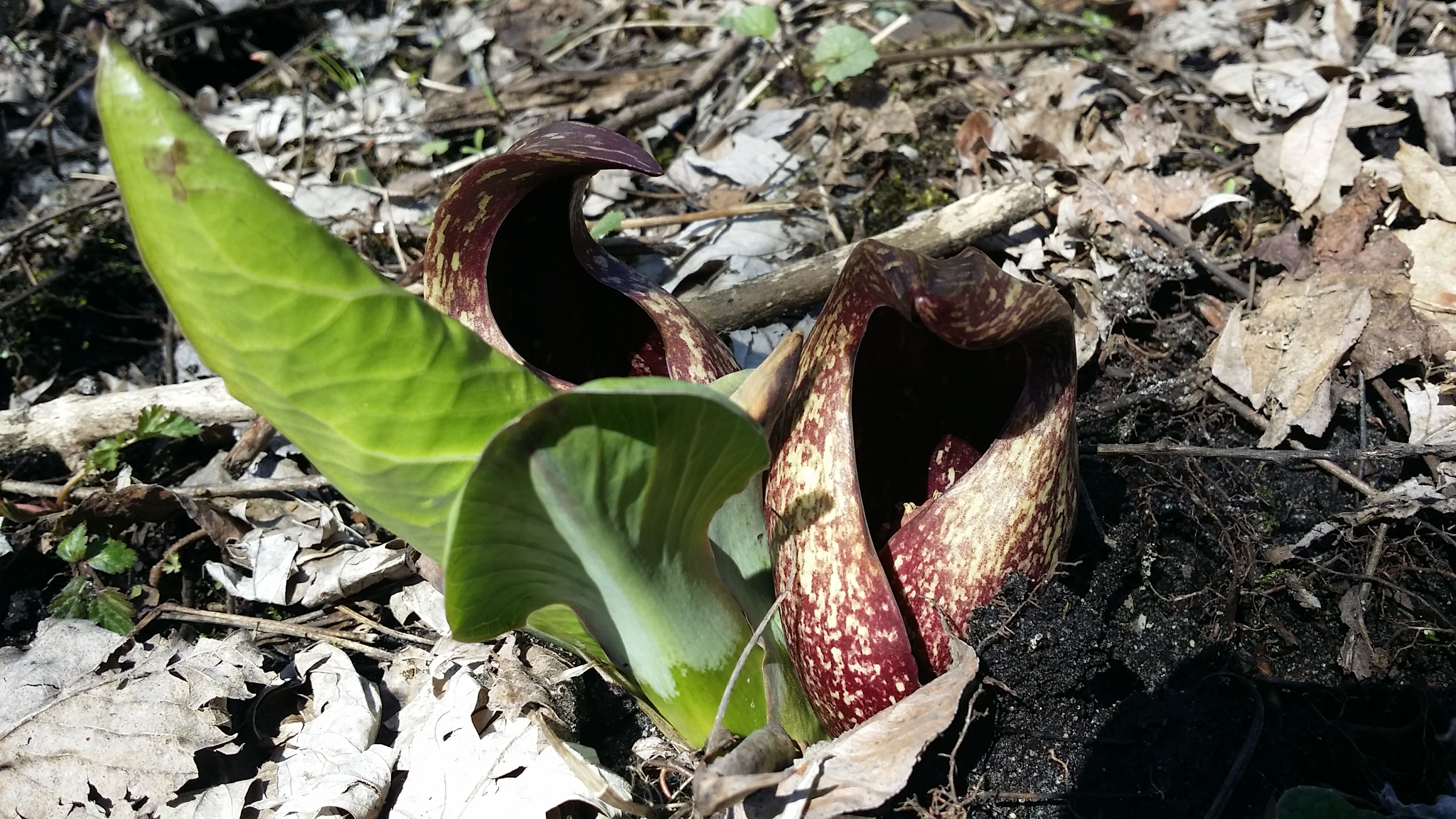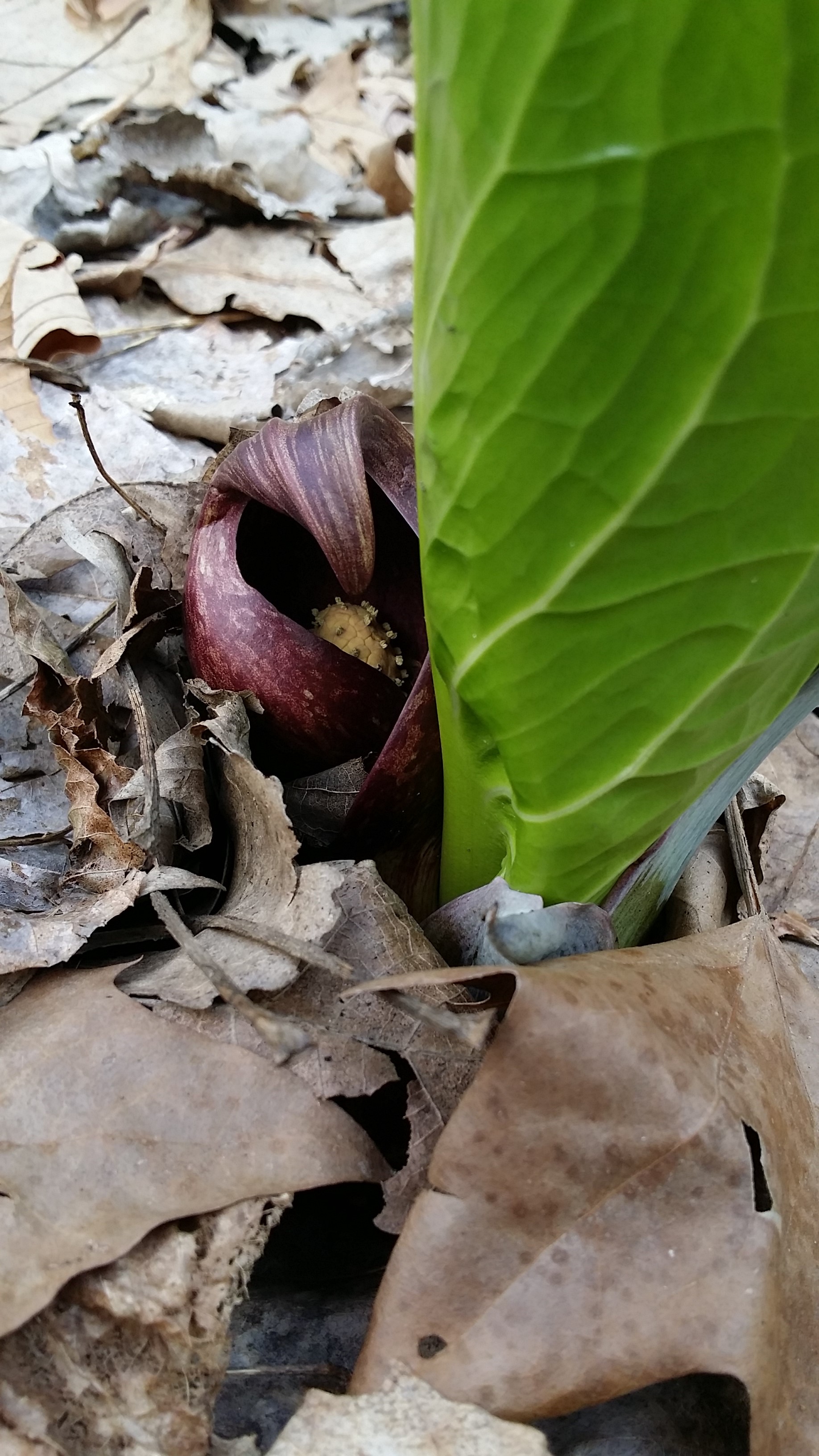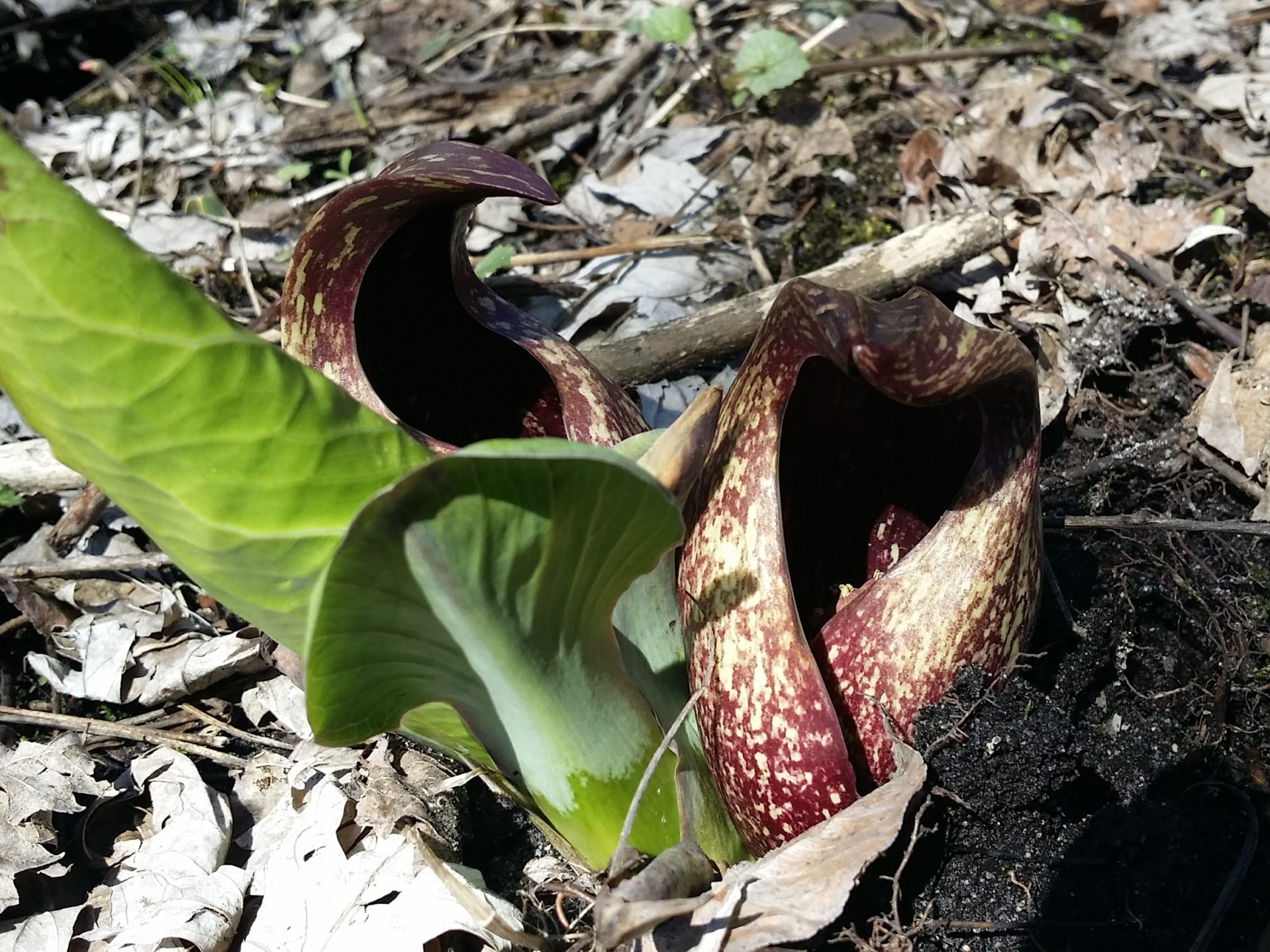Since it is finally warm, I wanted to find one of the earliest of spring wildflowers, skunk cabbage (Symplocarpus foetidus). I had scoped out a spot two years prior but once we got there, all I found were ticks! No skunk cabbage. I think it was too dry of a winter to get the proper seeps to induce the skunk cabbage to come up. Oh well. I have photos of plants from other years!

Skunk cabbage (Symplocarpus foetidus, Araceae)
Skunk cabbage flowers can bloom so early in the year as they can generate their own heat. They generate heat through cellular respiration in the mitochondria. This heat, along with the stinky smell (thus the name) and reddish colors of the flowers, helps to attract flies for pollination.

Skunk cabbage (Symplocarpus foetidus, Araceae)
My friend asked if skunk cabbage was edible, even though it is in the Araceae family. This family, the arum family, includes our native jack-in-the-pulpit (Arisaema triphyllum), titan arum (Amorphophallus titanum, largest unbranched inflorescence in the world), duckweed (Wolffia) and taro (Colocasia esculenta). Most species in this family are not edible due to the large amount of calcium oxalate that forms long pointed crystals. Taro can be eaten, but it must be soaked, dried and cooked. So maybe you can do that with skunk cabbage, but I wouldn’t want to try.

Skunk cabbage (Symplocarpus foetidus, Araceae)
